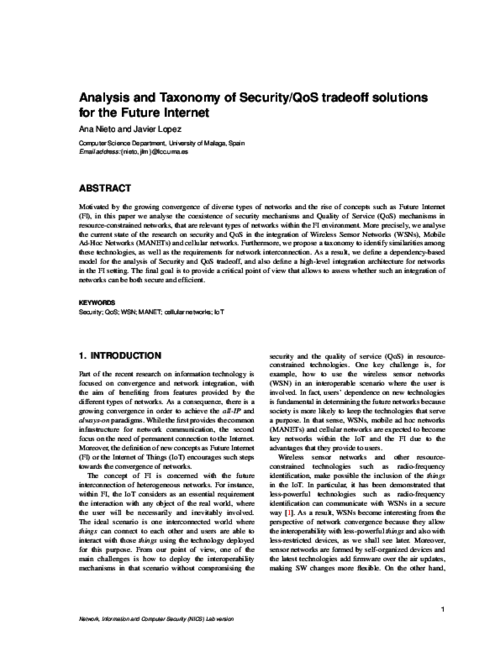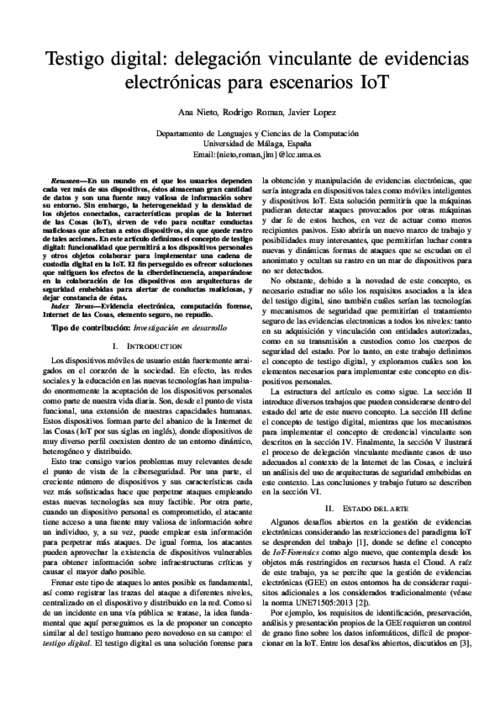 ] Title Type Year
] Title Type Year Security and Communication Networks (SCN) Journal, vol. 7, issue 12, Wiley-Blackwell, pp. 2778-2803, 2013. DOI
Abstract
Motivated by the growing convergence of diverse types of networks and the rise of concepts such as Future Internet (FI), in this paper we analyse the coexistence of security mechanisms and Quality of Service (QoS) mechanisms in resourceconstrained networks, that are relevant types of networks within the FI environment. More precisely, we analyse the current state of the research on security and QoS in the integration of Wireless Sensor Networks (WSNs), Mobile Ad-Hoc Networks (MANETs) and cellular networks. Furthermore, we propose a taxonomy to identify similarities among these technologies, as well as the requirements for network interconnection. As a result, we define a dependency-based model for the analysis of Security and QoS tradeoff, and also define a high-level integration architecture for networks in the FI setting. The final goal is to provide a critical point of view that allows to assess whether such an integration of networks can be both secure and efficient.

II Jornadas Nacionales de Investigación en Ciberseguridad (JNIC 2016), pp. 109-116, 06/2016.
Abstract
En un mundo en el que los usuarios dependen cada vez más de sus dispositivos, éstos almacenan gran cantidad de datos y son una fuente muy valiosa de información sobre su entorno. Sin embargo, la heterogeneidad y la densidad de los objetos conectados, características propias de la Internet de las Cosas (IoT), sirven de velo para ocultar conductas maliciosas que afectan a estos dispositivos, sin que quede rastro de tales acciones. En este artículo definimos el concepto de testigo digital: funcionalidad que permitirá a los dispositivos personales y otros objetos colaborar para implementar una cadena de custodia digital en la IoT. El fin perseguido es ofrecer soluciones que mitiguen los efectos de la ciberdelincuencia, amparándose en la colaboración de los dispositivos con arquitecturas de seguridad embebidas para alertar de conductas maliciosas, y dejar constancia de éstas.
